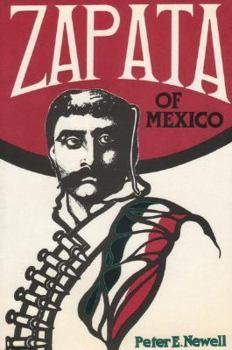Zapata of Mexico
Select Format
Select Condition 
Book Overview
Emiliano Zapata, hero of the Mexican Revolution that overthrew the Porfirio Diaz dictatorship in 1910, died a victim of that revolution. With his call for 'land and liberty', Zapata helped make and... This description may be from another edition of this product.
Format:Paperback
Language:English
ISBN:0932366082
ISBN13:9780932366085
Release Date:May 1979
Publisher:Black Thorn Books
Length:176 Pages
Weight:0.56 lbs.
Dimensions:0.9" x 5.6" x 8.4"
Customer Reviews
1 rating
Very informative
Published by Thriftbooks.com User , 27 years ago
Peter Newell gives us a good look at the impact that Zapata had on the Mexican Revolution. He shows us that Zapata was a man of honor and respect who unlike the other key figures of the revolution was not interested in ruling the people, but instead wanted to serve them. His battle was for one thing only, that the poor of Mexico have a better chance of having a good life. In this short book, Newell does show us this, and also shows us how all the different factions at one time or another betrayed him, or didn't take him seriously. That was the downfall of some of this men. He also tells of the historic meeting between Zapata and Villa and gives a detailed description of what transcribed. Of the two, Zapata was the one who kept true to the aims of the revolution and that is why he is still a symbol of resistence to the poor of Mexico today.






